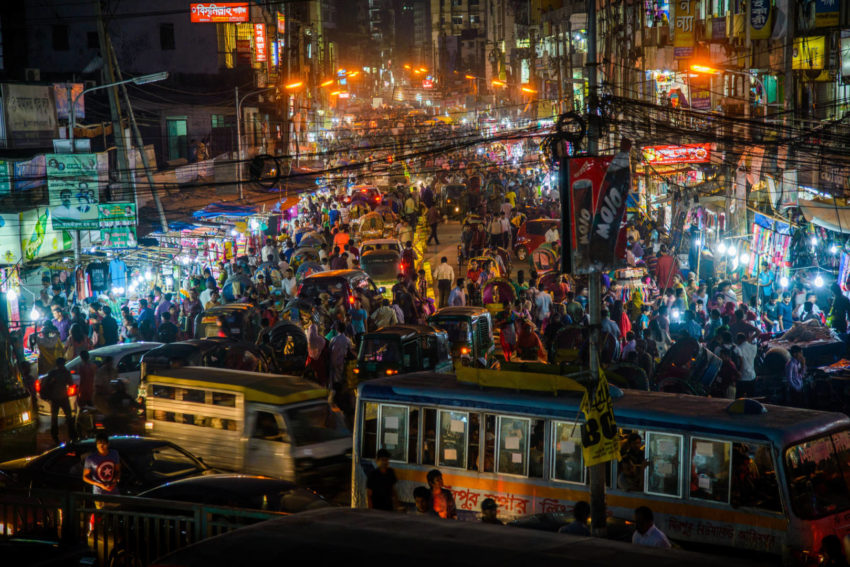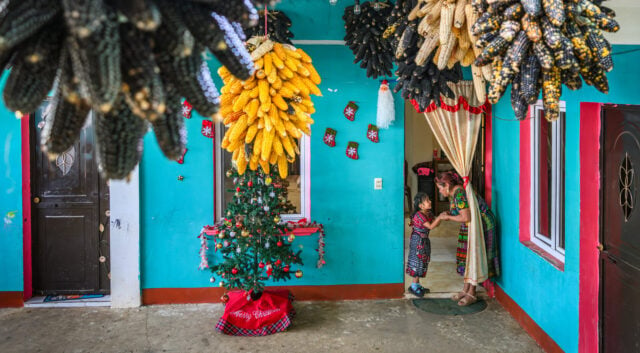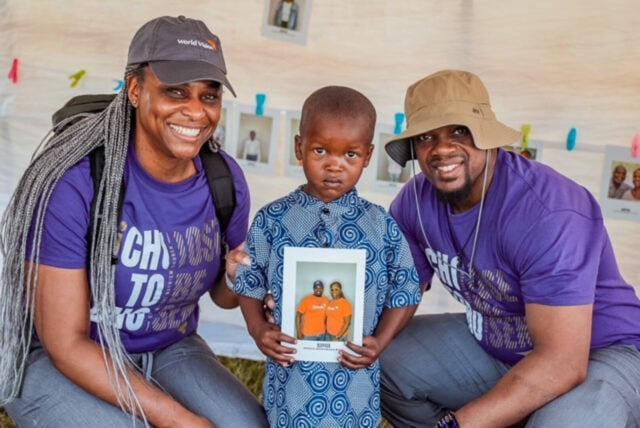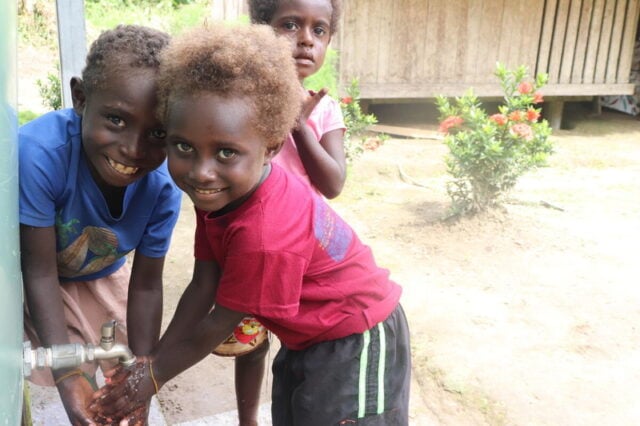Dhaka Shishu, a 5-square-mile mish-mash of high-rise buildings and slums in Dhaka, Bangladesh’s capital, is home to hundreds of thousands of people. Living conditions are harsh. A mishap with a kitchen cooking fire could set an entire block ablaze.
Most residents earn a living as day laborers, rickshaw pullers, and small business owners. Thousands of them are Urdu-speaking people who sided with Pakistan during the Liberation War of 1971 but were unable to leave after Bangladesh won independence, so they stayed in Dhaka Shishu, just getting by. For them and many others, poverty creates circumstances unkind to children: child marriage, trafficking, poor health, and child labor.
But child sponsors provide hope and support, their gifts anchoring World Vision’s work in this urban community since 1997. Sponsorship combats poverty’s effects by enabling children to pursue education, through regular school or informal learning, and empowering parents through community-based organizations — work that will have a lasting impact for this generation of children and others to come.
Child sponsorship means a different life
Many children in Dhaka Shishu must work to help their families make ends meet, but not Akhi Akter, 15. She has been sponsored for 10 years. “I want to be a teacher,” she says. “I want to teach the poor children who cannot afford an education.”
This easily could have been her situation, without sponsorship. Her mother, Jesmin Rahmin, 27, says that the support makes it easier for her and her husband, who earns only about $2.50 a day as a driver, to equip Akhi with an education. “If we couldn’t send her to school, she would have to work as a house cleaner or in a garment factory. Her life would take a different turn.”
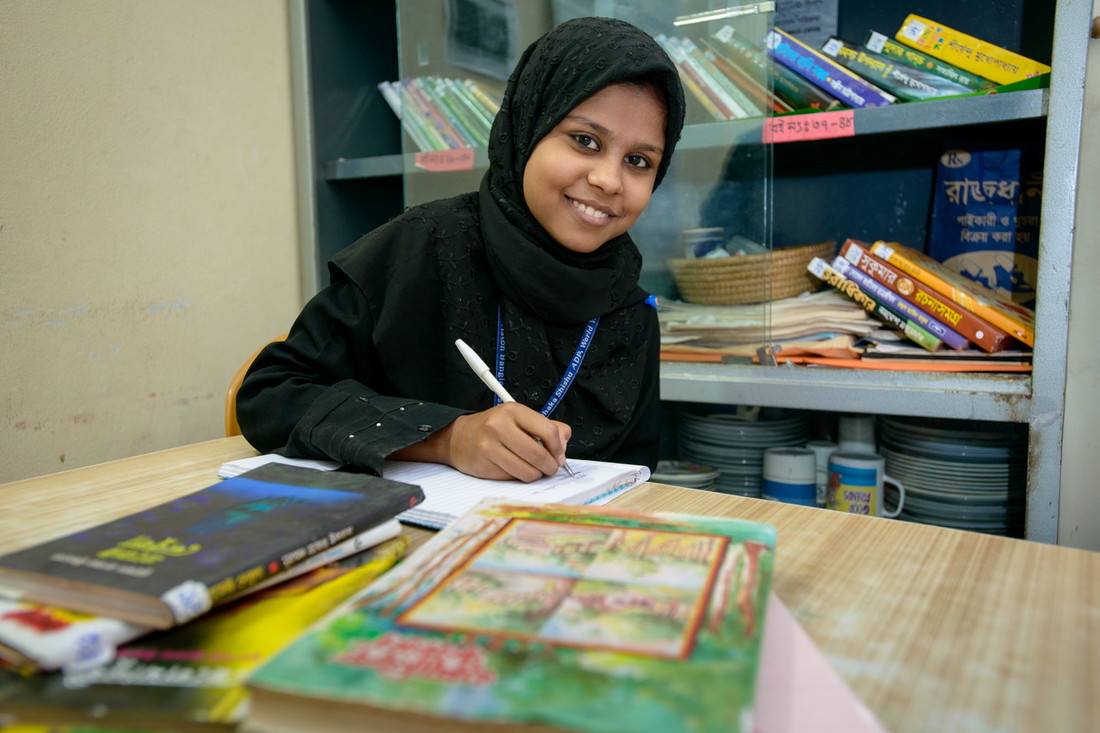
Akhi joins the conversation with a confidence you don’t always see in Bangladeshi girls. “From sponsorship I’ve received support beyond education,” she says. “I learn about child rights. I know my rights. I can read many books that are not my textbooks. I encourage my friends to read books.”
Another pitfall Akhi has avoided is child marriage, frequently caused by a family’s poverty. “When parents can’t afford a girl, they plan an early marriage [for her],” she says. “When the girl has a child, she is still a child herself.”
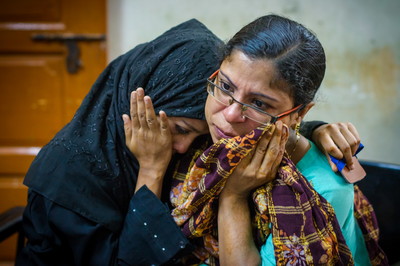
Jesmin gazes at her daughter with pride. Then she pours out her own story. Jesmin married too young — at 11 — and had Akhi when she was only 12 years old. She worked in menial jobs to try to make ends meet.
Hearing this, Akhi loses her composure and begins to weep. Mother and daughter hold each other, both wiping tears from their eyes. It is a moment of revelation for Akhi. She now knows that her mother has endured everything she’s learned about — and that child sponsorship has helped keep her from the same fate.
“Her life will certainly be different than mine,” Jesmin says.
Akhi’s sponsor has given her the opportunities her mother never had. “Jessie is my sponsor,” she says, brightening. “She is 53 years old. She has a brother and a pet cat. She encourages me to study hard. She likes me, and I like her.”
Jessie even helped name Akhi’s brother. “His name is Jisun,” says Jesmin. “I sent her a photo when I was pregnant with him. She proposed his name. It means ‘the morning sun.’”
Investing in families
In a World Vision-run community center, Taslima Begum, 32, and her daughter, Sumaiya Toma, 7, are learning karchupi, traditional Bangladeshi embroidery.
The center is one of several in the area, all serving as hubs for World Vision’s programs. It’s open six days a week, 12 hours a day, and offers a range of services to children and their families — from healthcare and skills training to dance, music, and art.
Taslima practices the painstaking stitching technique so that she can create dresses that sell for a good profit, to supplement her husband’s income from a business that dredges sand from the river. “World Vision is a facilitator for us for skills development,” she says. “World Vision is helping us increase our income.”
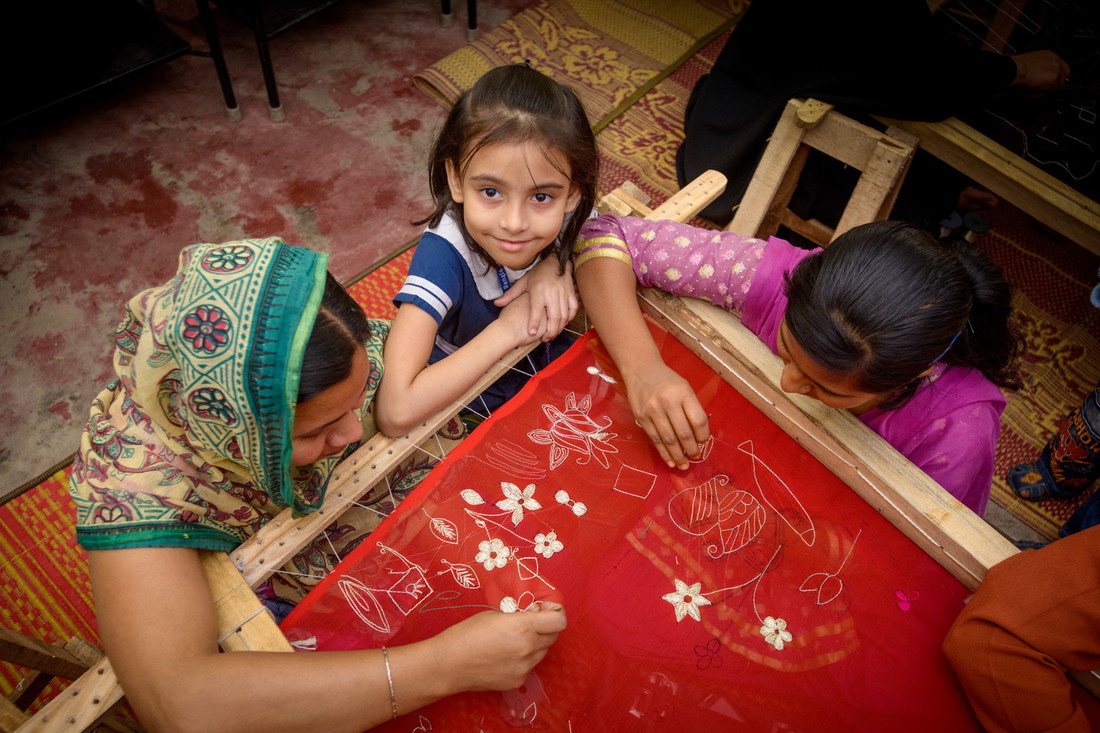
(©2013 World Vision/photo by Jon Warren)
Five years ago, Taslima joined a community-based organization. The groups empower parents to monitor sponsored children’s progress. In addition, the organizations provide economic support. Members contribute small amounts of money toward collective savings, which can then be used as loans for business or personal reasons — such as paying university tuition for a child. There are seven such community-based organizations in Dhaka Shishu, with 1,500 members.
Some groups have been recognized by the government for their success.
Taslima hasn’t yet taken out a loan, but she plans to start a dressmaking business. “When I complete [embroidery] skills training, then I’ll take loans out.” She estimates that she’ll be able to earn 9,000 taka per month, or about $115 — more than her husband makes.
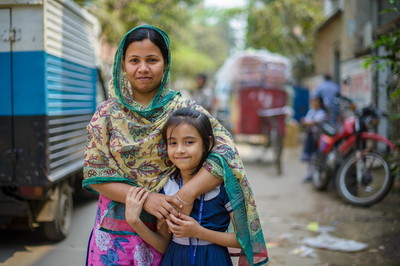
Sumaiya watches her mother work. The third-grader loves math. “I like to study,” she says. “That’s why I want to be a teacher.” She attends music class at the community center every Thursday and Friday.
Taslima says Sumaiya’s sponsor “has a great heart. With this great heart, she helps my child. Please tell them we are so grateful for helping with education.”
Community-based organizations such as Taslima’s have become a powerful force in helping others in need in Dhaka Shishu. With training and encouragement from World Vision, some of the groups have grown so large they now run stores, free clinics, weekly markets, and sewing and computer training.
Founded and fueled by child sponsorship, the organizations will continue serving the community long after World Vision transitions out in 2017.
‘Light of tomorrow’
While Akhi and Sumaiya can attend regular school, other children in Dhaka Shishu must work during the day due to their families’ poverty. World Vision runs four night-school centers for these children.
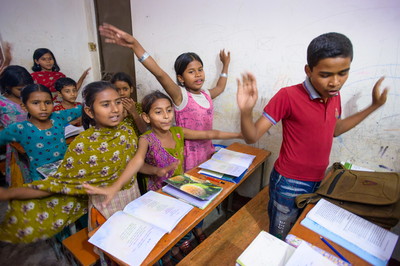
The centers show how sponsorship funding improves life for vulnerable children in the community as a whole. More than 200 children living on the streets in sixth to eighth grades attend these night classes, where after a day of working in shops, as servants, or selling flowers on Dhaka’s busy streets, they can learn and eat a nutritious meal.
Rasel Ahammed, 29, has taught at one of the centers since 2010. “We are concerned about every child in the community,” he says. “Every student has a right to learn.”
He says that children’s jobs can be dangerous — those who work as maids are often beaten, and young street vendors risk being hit by cars.
At school, “they learn moral education,” says Rasel. “They learn to respect themselves and respect others. We teach them how to protect themselves against child trafficking. We teach them not to go with strangers.”
Even more importantly, the children experience hope. “They can see the light of tomorrow,” Rasel says. Without the school, “they will not believe they are something important.”
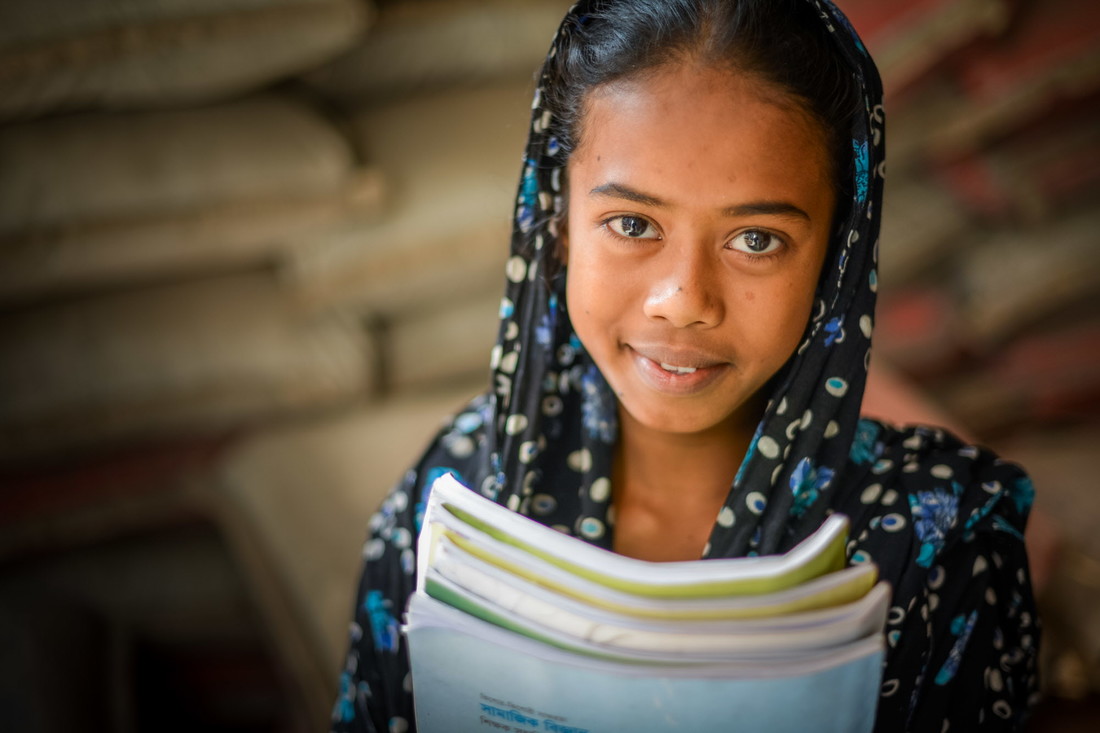
The schools work to close the education gap between children living on the streets and students in regular schools. Some students, like Bithi Aktar, 13, flourish at the centers and go on to more formal education.
Bithi’s father is disabled, and her mother must earn enough to support her four children. To help make ends meet, Bithi used to work with her mother in other people’s homes. She attended night school at a World Vision center, and upon graduation, has continued her studies at a regular school in Dhaka Shishu, where she’s in grade 5.
Although she still works — in a much safer job as a tailor — Bithi sees “the light of tomorrow” Rasel spoke of. “I want to become a medical doctor,” she says. “I want to serve poor children so they won’t have the experiences I had.”
